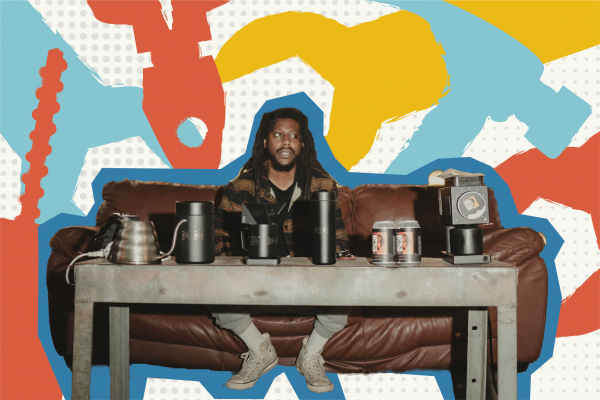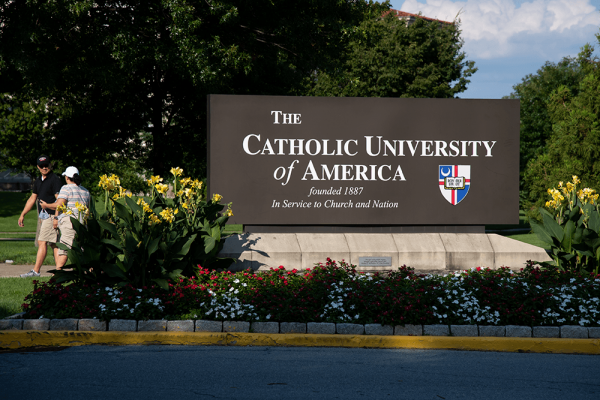Donald Trump has given walls a bad name. His incessant ranting about a wall between the U.S. and Mexico is about keeping people separated, and specifically keeping unwanted people out of a protected space. That’s one function of walls.
My time on the Camino de Santiago has provided a different vision of walls. This ancient route through northern Spain has been traveled for centuries by pilgrims, as well as livestock, carts, and horses. And it is worn down. At some points, where the route today has not diverted from paths even 1,000 years old, a corridor has been cut into the ground. The pathway, often wide enough for a cart, is 5, 6, 7, or 8 feet deep. And it is protected and framed by wall on each side.
I kept examining these ancient walls. Often, they were slabs of granite laid on top of one another, with thousands of pieces. Their age and the constant moisture of the air in Galicia, blowing from the sea miles away, meant walls were covered the moss, and vegetation wove through them like a net, holding them in place. Certainly, some of this was engineered as the pilgrimage gained in popularity, and political and religious authorities invested in the Camino’s infrastructure.
Such walls appeared frequently, in many forms along the Camino. But they weren’t there to keep people out or separated. Rather, they functioned more like guardrails, defining the contours of the path and preserving its integrity from erosion, landslides, and floods. Moreover, these walls also seemed like guiderails, pointing the Way forward toward its ultimate destination. They showed where you were going, and beckoned you forward.
The metaphor from a pilgrimage like the Camino de Santiago to one’s journey through life is irresistible. Many authors have turned to the physical experience of pilgrimage as a means of explaining the Christian journey, and for good reason. For me, the walls of the Camino added a new dimension to this old metaphor.
Our journey needs guardrails. Certain covenants, whether to a spouse, a vocational calling, a group of trusted friends, a 12-step process, or a Christian community, are put in place because we know they make possible our way forward. They maintain the integrity of our pathway.
We also need guiderails. I kept thinking about how the walls of the Camino are about movement. They invite one to keep walking forward; these walls are built to invite and beckon the pilgrim to the destination. That’s the thing about a pilgrimage: It’s moving somewhere, to a clear future point. It’s important, I think, to recognize that a Christian pilgrimage doesn’t go in a circle. We’re not just in an endlessly repeating cycle. What the theologians call “salvation history” has a direction, just like the Camino de Santiago.
The pilgrims making this journey in the 11th and 12th centuries knew they wanted to get to the physical destination, where the bones of James the Apostle were kept in the Cathedral of the city bearing his name. But this was also a deeply spiritual destination. They believed that this physical encounter could open a mystical experience bringing them closer to God. Of course, in the practice of Christianity during that time, those experiences were complicated by transactional ideas of earning one’s repentance and righteousness. But pilgrims turned their steps toward Santiago, for months at time, as a means of turning their hearts toward God.
Many of today’s pilgrims, in the panoply of contemporary spirituality, have similar yearnings. But surely, and particularly for the Christian pilgrim, the destination can’t be limited to a personal experience. If these ancient walls are guiding us forward within the trek of salvation history, we’re being beckoned toward God’s intended future for this world. The metaphor of pilgrimage is not limited to our personal journey. We’re walking together, with one another, toward a place where justice and peace kiss, and the world is filled with the presence of God like the waters cover the sea. In moments of unexpected hospitality, in fresh friendships, in countless encounters of human kindness, and in journeys shared over bread and wine, we sense the signs of where our journey is headed.
The World Council of Churches, as it completed its Assembly held in Busan, South Korea, searched for words and images that could capture the essence of all its work in this present period. They decided to call the efforts of their churches “a pilgrimage of justice and peace.” That serves as a discerning remainder of where the ancient walls marking the pathways of the Camino de Santiago are directing us today.
Got something to say about what you're reading? We value your feedback!







